#ancient indian coin.
Text

Ancient Indian Coins are the old coins in India. In this Current period If you can evaluate the value of ancient India coins then. it was costly because one of the reasons market change and technology change. But if you are interested in purchasing Ancient India coins then I suggest novelemporium as one of the best online platforms in india, where you can buy your own ancient India coins at the cheapest price. If you are really excited to purchase ancient India coins then you can directly visit the authenticate and genuine website www.novelemporium.com
0 notes
Text
Ancient Indian Coins of Foreign Rulers
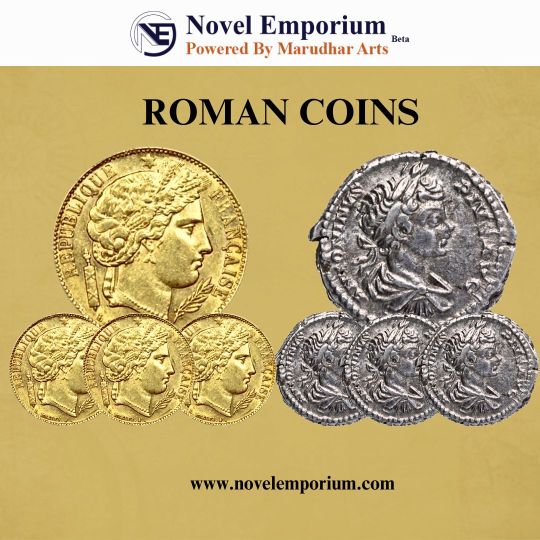
#Introduction:#Ancient India is a land rich in history#culture#and diversity. Throughout the centuries#it witnessed the rise and fall of various empires#attracting foreign rulers from distant lands. One of the intriguing aspects of this period is the numismatic heritage left behind by these#their interactions with Indian society#and the fascinating blend of local and foreign influences. In this blog#we will embark on a numismatic journey#exploring the ancient Indian coins of foreign rulers and unraveling the stories they tell.#In ancient times#various foreign empires#such as the Romans#Portuguese#British Empire also ruled over India. During the Roman rule#they introduced their own coins for trade and commerce#known as Roman Empire coins. We possess a collection of currencies from different foreign kingdoms of Portuguese#British#Roman#and others. We have rare currencies and ancient coins such as the Silver Denarius in their period.#1.The Indo-Greeks: The Indo-Greeks were among the first foreign powers to establish their presence in India. Their coins#issued during the 2nd century BCE#serve as a testament to the cultural fusion that occurred during this period. We will delve into the designs#inscriptions#and artistic influences that characterize these coins#shedding light on the cross-cultural interactions between the Greeks and the Indians.#2.The Kushanas: The Kushan Empire#originating from Central Asia#had a significant impact on ancient Indian history. Their coins#minted from the 1st to the 3rd century CE
0 notes
Text
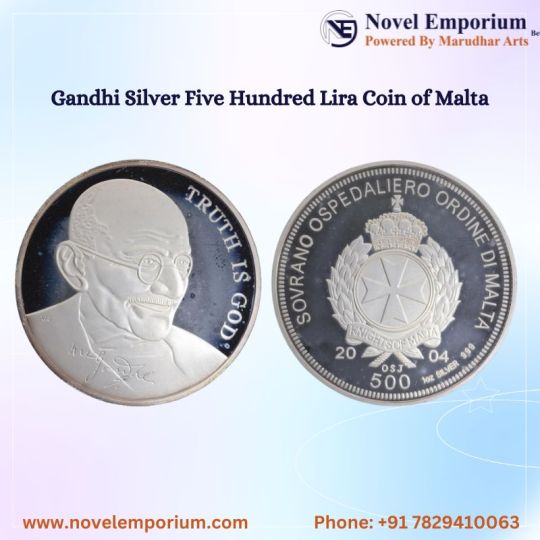
Collecting old items can be a fascinating hobby that allows individuals to connect with the past, preserve time, and value the skill of previous ages in collecting ancient objects. Whether for personal enjoyment or investment purposes, the world of old collectibles offers a diverse range of items to explore and appreciate.
#Gandhi Collections#vintage products online india#Indian Sultanate Coins#Antique coins#Old British Coins#Ancient India Coins#Mahatma Gandhi Coins#Republic India coins#British India currency notes#Banknotes of India#Autographs of India#World Wide Stamps Collection#Medals of India
0 notes
Text
Get Ancient India Coins Online At An Affordable Price
Get the best ancient Indian coins online from Novel Emporium at an affordable price. Here, you can buy and sell ancient India coins online. We deal in different metal coins such as silver, gold, and copper. Additionally, To know more about us and to see our ancient India antique coins collections please check out.
#ancient Indian coins online#ancient copper coins#ancient coins#ancient antique coins#ancient India coins#buy and sell ancient coins#silver ancient coins
0 notes
Text
Coins weren’t the only, or the most important, place that Indian and Greek cultures impacted one another. Take a look at this 1885 photo of a piece of an ancient column found in what’s now northern Pakistan:

If you know your Greek columns, you’ll be able to identify this as the Corinthian style (Corinthian capitals are the really complicated ones with lots of leaves). But who’s that in the middle?
Yep, it’s the Buddha, plunked down in the middle of a very Greek-looking piece of sculpture.
And look what’s on top of it — a bunch of very distinctively stylized Indian elephants:

{WHF} {Ko-Fi} {Medium}
611 notes
·
View notes
Text
TTEOTM Easter Eggs Part 3 - Costume and Makeup Details
I love beautiful costumes, but even more when they tell a story! Here are a few of my observations. Did you spot anything else? (Spoilers!)
(1) The two outfits Ye Xiwu gifted Tantai Jin are both quilted. The purple costume is particularly unusual in that it's constructed like a blanket. In contrast, all his clothing in the hostage prince arc are not quite thick enough for Sheng kingdom's harsh winters. Ye Xiwu is literally bringing warmth to his life.


(2) TTJ and YXW wear similar costumes in their two love scenes - (1) Ep 2 - YXW's imagination of the drugged affair which led to their marriage and (2) Ep 39, where they finally consummated their marriage on screen. YXW wears the same pink costume. TTJ in different but identical-looking mustard yellow costumes.


(3) Some viewers have criticized Ye Xiwu for not taking off hair accessories before going to bed, chalking it up to lazy filmmaking. This is not necessarily the case. In ancient China, upper class women did sleep with their hair-do and manage to keep elaborate designs in tack. How? By resting her neck, not her head, on the pillow.

Ye Xiwu / Li Susu does go without hair accessories in a few occasions: when she is traveling, ill, depressed, and in mourning. It is most likely a creative choice to create a contrast between moments where her character is in control and powerful vs. vulnerable.




(4) All of Tantai Jin's female lieutenants wear red, from Pianran (after she starts working for him) to Siying and Monu. In fact, so does Tantai Minglang's lieutenant Fuyu. Red appears to be the career woman's color in this world!




(5) After Mingye falls in love with Sangjiu, he adds the red waist scarf belt that's part of his wedding dress on top of his normally blue outfit.

(6) The costume that Cang Jiumin (left) wears when refining the Dragonheart Shield echoes Mingye's costume (right) through the red/blue colors and collar design, reinforcing the connection between the two characters.
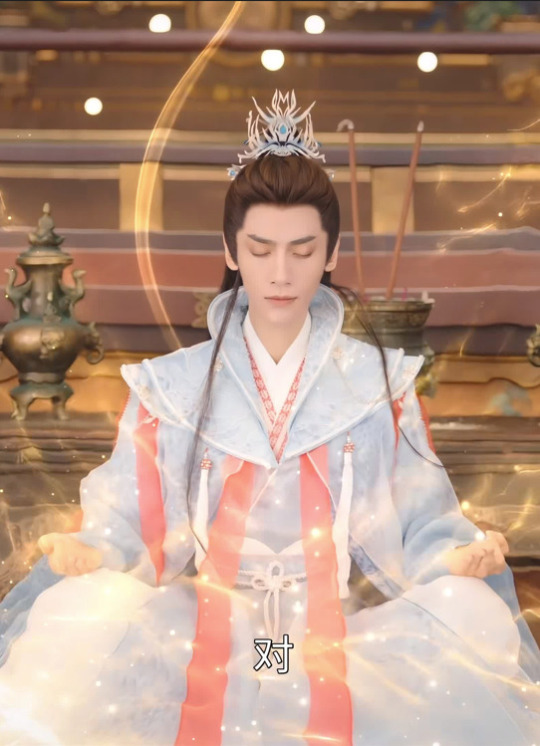

(7) The costumes in Bo're dream hint at the characters' true forms:
Mingye (dragon): dragonscale armour & patterned clothing
Sangjiu & Sangyou (clams): pearls & shell motifs
Tianhuan (snake): gold serpent hair crown & bracelets




(8) Throughout the drama, only characters in the Upper Immortal Realm go full Dunhuang Feitian style, characterized by bandeaus, scarves, layers of drapery, sleeveless (similar to Indian clothing).

The style is used in formal occasions or to confer power or godliness. For example, Sangjiu goes Dunhuang with sleeveless draping outfits at her wedding and after she goes dark.
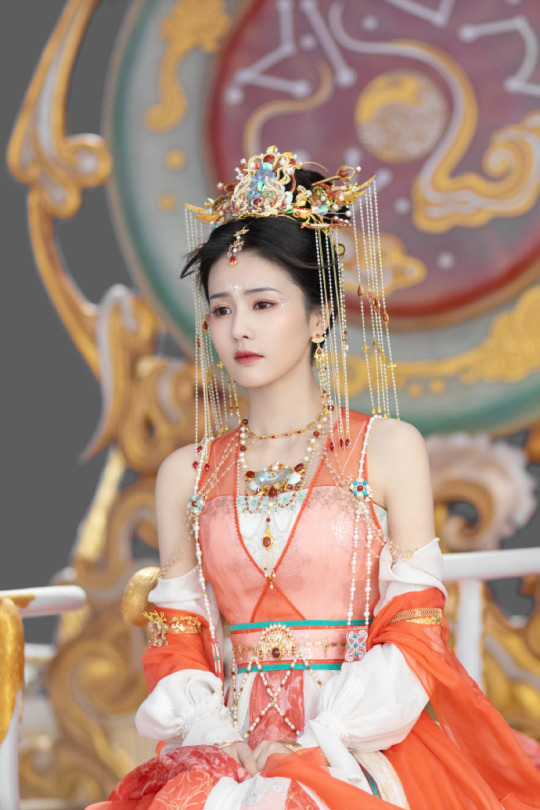

Similarly, when Susu and Tantai Jin become gods at the finale, they also take on a new Dunhuang-style outfit. In fact, the multi-color drapery of Tantai Jin's outfit seem to be an amalgamation of the fabric used in the twelve gods' outfits.

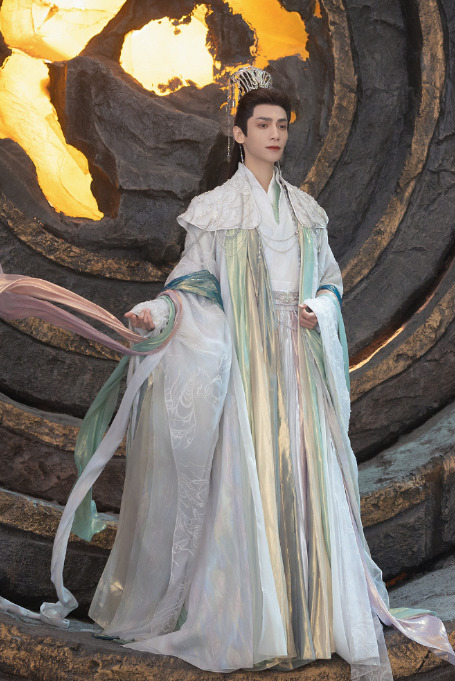
(9) Members of the Moon Tribe all wear long wavy hair, chunky metal and coin ornaments, and hair braiding.
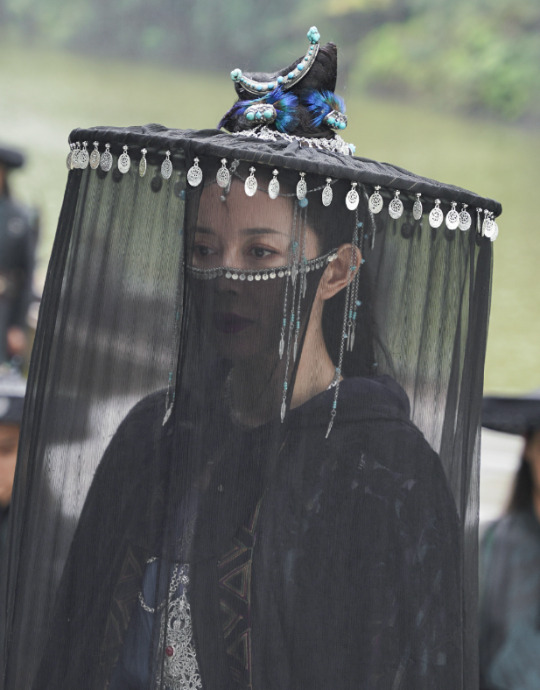

Tantai Jin follows the dress code when he stays with the Moon Tribe before entering the spiritual dimension.

Guess who also loves his wavy hair, metallic accessories, and leather? Of course it's the Ancient Devil God, again reminding viewers of his connection to the tribe.

Bonus: Luo Yunxi mentioned in an interview that his characters (hostage prince, emperor, Mingye, Devil Gods) all have different hairpieces/wigs. He had to take off and reglue his hair between scenes.
#till the end of the moon#luo yunxi#black moonlight holds the be script#cdrama#chang yue jin ming#chinese drama#tteotm#tantai jin#bai lu#ye xiwu#mingye#sangjiu
311 notes
·
View notes
Text

DRINKING WATER FROM COPPER CUPS HELPS 🧡💛

• Kill bacteria
• Stimulate the brain
• Slow down aging
• Improve digestion
• Get rid of anemia
• Boost skin health
• Regulate thyroid gland
• Soothe arthritis pain
• Lowers risk of cancer & heart disease.

“Drinking water stored in Copper vessel is the healthy way. When we store water overnight in a copper vessel, few copper ions gets dissolved into the water molecules & it kills the harmful microbes. This is called oligodynamic Effect.”

Copper can destroy undesirable virus & bacteria. Ayurveda recommends storing water in copper vessels. Ancient indians throw copper coins in rivers,lakes ponds and wells to destroy bacteria and virus but todays generation throws coins without knowing the actual meaning of it.
#health
#pay attention#educate yourself#educate yourselves#knowledge is power#reeducate yourself#reeducate yourselves#think for yourself#think for yourselves#think about it#ask yourself questions#copper#health
268 notes
·
View notes
Text

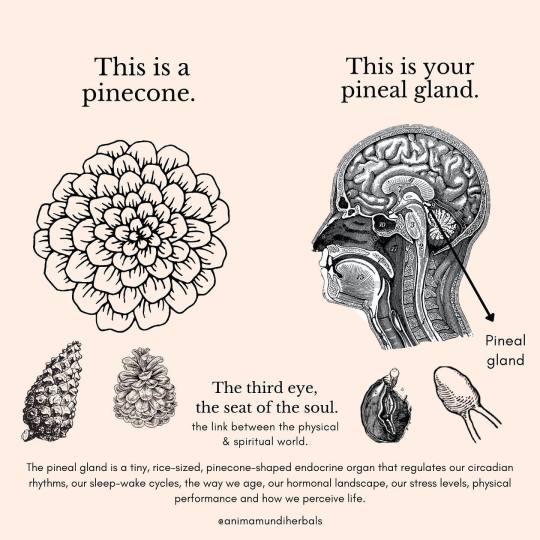
The Pineal Gland is a tiny pea sized gland located in the center of our brain, and happens to be one of the master endocrine glands that controls many aspects of our everyday life. Although it's not fully understood, one of it's main functions is to secrete melatonin, one of the most powder antioxidants best known for regulating sleep, circadian rhythm, aging, etc.
There’s hundreds of accounts written by ancient cultures all over the world on the esoteric and anatomical mysteries on this precious gland. And, although modern scientists have observed how the pineal gland secretes essentials like melatonin, serotonin and DMT (the spirit molecule) many of its roles remain a mystery.
17th century philosopher + scientist René Descartes, dedicated much time to the study of the pineal gland. He represented it as a Pinecone, a sacred symbol throughout history in almost every culture around the world and coined it as "principal seat of the soul". He said it was the link between the physical and spiritual world.
Ancient Assyrian carvings, dating back to 713-716 BC depict four-winged God-like figures using a pinecone to polinate their depiction of the Tree of Life.
In Greek and Roman history. Dionysus, was continually depicted carrying a "Thyrsus," a fennel staff woven with ivy and leaves and topped with a pinecone.
In Catholic traditions, The Egyptian Staff of Osiris, dating back to 1224 BC, depicts two intertwining serpents The Coat of Arms of the Holy See, found on the Vatican flag among other places, features a stacking of three crowns in shape to a pinecone.
Tribute to the Pinecone's immortality symbolism. Rising up to meet at a pinecone. Buddhists all throughout history have shaped their hair into the pinecone shape to pay honor to the pineal gland's powers. Mexican god "Chicomecoatl" ("Seven Snakes") depicts the deity offering forth pinecones in one hand, and an evergreen tree in the other. Indian deity "Kundalini" depicted as coiled serpents rising up from the base of the spine to the Third Eye (Pineal Gland) in the moment of enlightenment.
150 notes
·
View notes
Photo

Samudragupta
Samudragupta (r. 335/350 - 370/380 CE) was the first significant ruler of the Gupta Dynasty. Having come to the throne, he decided to extend the boundaries of his empire to cover the multiple kingdoms and republics that existed outside its pale. Known as the 'Napoleon of India' for his conquests, he was also a man of many talents and laid a firm foundation for the empire. The rise of the Gupta Empire and the beginning of its prosperity are attributed to him, his military conquests and policies.
Succession
Samudragupta succeeded his father Chandragupta I (r. 319 – 335 CE). Some historians, however, state that he was preceded by Kachagupta or Kacha who was Chandragupta I's eldest son. Kacha's identity is yet to be established, as only some coins bearing the name have been found and no other evidence of his rule has been discovered so far. The fact that Chandragupta I actually nominated Samudragupta to the throne shows that he was not his eldest son. Therefore, it could be possible that the historians are justified in saying that Kacha was the eldest son who succeeded his father as according to the ancient Indian custom of male primogeniture (his father's own wishes on the matter notwithstanding). Thus, Chandragupta could only nominate his younger son based on his abilities but was not able to actually make him king.
It is not clear as to whether Samudragupta opposed him or that Kachagupta's end was natural and he was succeeded by his sibling because he had no other heir. As to why Samudragupta opposed Kachagupta, if he did so at all, no information is available. What is known is that he was ultimately able to claim the throne.
Details of Kachagupta's reign are hardly mentioned in the historical evidence existing for the Gupta period, and hence most historians place Samudragupta as the successor of Chandragupta I, stating that Kacha was none other than Samudragupta himself; “Perhaps Kacha was the original or personal name, and the appellation Samudragupta was adopted in allusion to his conquests” (Tripathi, 240). Historian R.K. Mukherjee correctly explains that the title Samudragupta “means that he was 'protected by the sea' up to which his dominion was extended” (19). Referring to Samudragupta's accession, historian H.C. Raychaudhuri says that “the prince was selected from among his sons by Chandra Gupta I as best fitted to succeed him. The new monarch may have been known also as Kacha” (447). The grounds for such an assertion is an epithet implying “uprooter of all kings” used for Kacha in his coins, which was used only for Samudragupta as no other Gupta emperor ever made such extensive conquests. Had Kacha existed before Samudragupta and made such conquests, there would have been no need for the latter to make them! Kacha would have thus been included in the official Gupta records in glorified terms as well, which is not the case. As regarding Kacha's coins, “the attribution of the coins bearing the name Kacha to Samudra Gupta may be accepted” (Raychaudhuri, 463).
Though not validated by historical sources, another theory maintains that Chandragupta I managed to override the male primogeniture law and made his favourite Samudragupta the king. Enraged at his supersession as the eldest son, Kacha never reconciled with his brother and rebelled against him for the throne but was defeated.
Continue reading...
34 notes
·
View notes
Text
The Sign of Four: The Strange Story of Jonathan Small (Part One of Two)
I will split this in two parts as I've got a lot to cover here.
CW for discussions of nasty prison conditions.
The depth of the Thames is about 6.5 metres at low tide in Woolwich, near to the Plumstead Marshes as they were then. However, the river has strong currents and very little visibility, so it would be a risky operation even with 2024 diving technology for some rather small objects.
The rupee originally was a silver coin dating back to ancient times in India, becoming something of a standard currency during the Mughal period. The East India Company introduced paper rupees and while there was an attempt by the British to move their territory to the pound sterling, they soon gave up, minting their own rupees with the British monarch's head on. The currency was also non-decimal. India retained the currency post-independence and went decimal as well.
Mangrove trees are very common in equatorial coastline regions - they can remove salt from the water, which would kill many other trees.
Prisoners set to the Andaman Islands penal colony were forced to work nine to ten hours a day to construct the new settlement, while in chains. Cuts from poisonous plants and friction ulcers from the chains would often get infected, resulting in death.
The convict huts on Ross Island were two-storey affairs, with the bottom as a kitchen and took area, the prisoners sleeping on the upper floor. Designed this way as an anti-malaria measure, they however leaked and the prisoners themselves were constantly damp from the rainfall, offering them little protection from the mosquitoes in any event.
Ague is an obsolete term for malaria; adults experience chills and fever in cycles.
The British would conduct experiments with quinine as a malaria treatment by force-feeding it to the prisoners. This caused severe side effects.
The British would make use of locals as warders, who wore sashes and carried canes. I'd imagine they could probably be quite brutal.
Pershoe is a small town on the River Avon near Worcester. It has a railway station with an hourly service to London, taking just under two hours today.
"Chapel-going" in this context means that the people attended a non-conformist church i.e. not one part of the Church of England.
"Taking the Queen's/King's shilling" was a historical term for joining the armed forces - for the army this was officially voluntary, but sailors could be forcibly recruited, being known as "press-ganged" until 1815. You would be given the shilling upon initial enlistment or tricked into taking it via it being slipped into your opaque beer. You would return the shilling on your formal attestation and then receive a bounty which could be pretty substantial in terms of the average wage, although a good amount of that would then be spent on your uniform. Some enlisted, deserted and then reenlisted multiple times to get multiple payments. The practice officially stopped in 1879, but the slang term remains.
The 3rd Buffs refers to the latter 3rd Battalion, Buffs (East Kent Regiment), a militia battalion that existed from 1760 to 1953, although it effectively was finished in 1919. However, in reality, they did not go to India to deal with the rebellion, instead staying in Great Britain to cover for the regular regiments who did.
The British never formally adopted the Prussian "goose step" instead going for the similar, but less high-kicking, slow march.
The musket would possibly have been the muzzle-loaded Enfield P53, a mass-produced weapon developed at the Royal Small Arms Factory in Enfield. It was itself was the trigger of the Indian Rebellion in 1857 due to the grease used in the cartridges. They would also be heavily used in the American Civil War on both sides, especially the Confederate one as they smuggled a lot of them, with only the Springfield Model 1861 being more widely used. As a result, they are highly sought after by re-enactors. The British used them until 1867, when they switched to the breech-loading Snider-Enfield, many of the P53s being converted.
The crocodile would likely have been a gharial, which mainly eat fish. Hunting and loss of habitat has reduced their numbers massively, with the species considered "Critically Endangered" by the IUCN.
"Coolie" is a term today considered offensive that was used to describe low-wage Indian or Chinese labourers who were sent around the world, basically to replace emancipated slaves. Indentured labourers, basically - something the US banned (except as a riminal punishment) along with slavery in 1865. In theory they were volunteers on a contract with rights and wages, however abuses were rife. Indentured labour would finally be banned in British colonies in 1917.
Indigo is a natural dark blue dye extracted from plants of the Indigofera genus; India produced a lot of it. Today, the dye (which makes blue jeans blue) is mostly produced synthetically.
I have covered the "Indian Mutiny" as the British called it here in my post on "The Crooked Man".
The Agra Fort dates back to 1530 and at 94 acres, it was pretty huge by any standards. Today, much of it is open to tourists (foreigners pay 650 rupees, Indians 50), although there are parts that remain in use by the Indian Army and are not for public access.
"Rajah" meaning king, referred to the many local Hindu monarchs in the Indian subcontinent; there were also Maharajahs or "great kings", who the British promoted loyal rajahs to the rank of. The Muslim equivalent was Nawab. However, a variety of other terms existed. The East India Company and the Raj that succeeded them used these local rulers to rule about a half their territory and a third of the population indirectly, albeit under quite a bit of influence from colonial officials. These rulers were vassals to the British monarch; they would collect taxes and enforce justice locally, although many of the states were pretty small (a handful of towns in some cases) and so they contracted this out to the British. As long as they remained loyal, they could get away with nearly anything.
562 of these rulers were present at the time of Indian independence in 1947. Effectively abandoned by the British (Louis Mountbatten, the last Viceroy, sending out contradictory messages), nearly all of them were persuaded to accede to the new India, where the nationalists were not keen on them, with promises they could keep their autonomy if they joined, but if not, India would not help them with any rebellions. Hyderabad, the wealthiest of the states, resisted and was annexed by force. The ruler of Jammu and Kashmir joined India in exchange for support against invading Pakistani forces, resulting in a war. A ceasefire agreement was reached at the beginning of 1949, with India controlling about two-thirds of the territory; the ceasefire line, with minor adjustments after two further wars in 1965 and 1971, would become known as the Line of Control, a dotted line on the map that is the de facto border and one of the tensest disputed frontiers on the planet.
India and Pakistan initially allowed the princely rulers to retain their autonomy, but this ended in 1956. In 1971 and 1972 respectively, their remaining powers and government funding were abolished.
Many of the former rulers ended up in a much humbler position, others retained strong local influence and a lot of wealth. The Nizam of Hyderbad, Mir Osman Ali Khan was allowed to keep his personal wealth and title after the annexation in 1948 - he had been the richest man in the world during his rule and used a 184-carat diamond as a paperweight, at least until he realised its actual value. The current "pretender", Azhmet Jah, has worked as a cameraman and filmmaker in Hollywood, including with Steven Spielberg.
12 notes
·
View notes
Text
The Bright Presence: a prick of light in an ocean of darkness

The present me here. Few warnings right away: I will address the Presences by “it” as well as “she/he”, when I feel like it suits my needs; it’s a very long read and there are lots of things to tackle (and I’m quite sure that I forgot some of them; plans are not my forte, my best tactics in writing theories is “I’m drowning”); even if me, who wrote the following introduction, has yet to learn this. So, grab a cup of your favourite beverage and enjoy! Now I will give this theory back to the naïve and cheerful past-me.
Finally, I can talk about the Bright Presence! I was so excited to write about him from the very beginning, but couldn’t, really, without establishing the foundation for the story of the real Thomas Zane and what happened and didn’t happen in the 1970 or how Alan was able to pull him into the story, given he had no knowledge about the population of not-a-lake.
Now, there are several things about the Bright Presence that I want to touch upon and will try my best not to plunge into insane rambling about this or that; and keep it as tidy as possible. Obviously, we have no knowledge about the origin of the Presences and the Dark Place itself, except for it all being in Ahti’s bucket, but we at least have some information to help us understand their nature and what actually hides beneath the waves of Cauldron Lake.
Randolph, the trailer park manager has this to say about it:
“The Indians thought the lake was a doorway to the underworld.”
The Dark Place and its entities are old, tremendously old. The Dark Presence spells it for us in the final confrontation in the first game:
“I’m much older than you. Older than your first work of art.”
She’s talking to Alan, of course, but it is pointless to compare this entity with him, he’s 31-33 (depends on what you ask: the guide that puts his age at 31 in 2010, or the memorial statue, that has his year of birth as 1977), and the Dark Presence was kicking long before his birth, as we know from Thomas’ story and the beliefs of the locals. She’s talking about humanity, about our first primitive work of art. Which puts her at least at around 50 thousand years old, plus this vague “much older than you”, which will put her at an even greater age, depending on what she means by that — where her definition of “you” starts. I mean, we talking hundreds of thousands of years now or even millions; what is evolution for her, really? She finishes with a promise to find someone else to dream her free, so her definition of humanity might do something with the first glimpse of imagination. And that is hardly something that we can establish properly. The Dark Presence might’ve existed before the Bright Presence, but we have hints that they are two sides of one coin, fighting their eternal war, so I will say the Bright Presence is as ancient at the Dark one.
So, what are they? This House of Dreams gives the explanation about the Dark Place as well as its inhabitants:
"In the end, he finally understood what he had to do, finally understood the true nature of the dark place that was hidden under the waves of the lake where they lived. The lake was an opening to dark place that was much bigger than the lake itself, in fact, much bigger than the whole universe we live in. He wrote one last poem, his masterpiece, a secret poem, a hidden poem, a poem that’s not among the poems I’ve found in the shoebox. And he took his girlfriend for one last dive. Together they sank down into the depths, far deeper than he had ever dived before. In the dream, I was there, diving with them. And from the depths, something, or some things, surged up to meet them. Things of darkness, but bright things of light as well. The diver explained that these things, or these presences, were forever fighting a war between the forces of light and darkness. A dark presence had taken over his girlfriend, and a bright presence now came to take over him. And he surrendered his body to it, but at the same time, the essence of who he was kept diving deeper, ever deeper, holding the essence of his girlfriend (their spirits? their souls?). The diver (or what was left of him, his true self) spoke the words of his secret poem. The poem described a new world, an island in this sea of darkness, a safe haven, a paradise, a “baby” universe. The nature of the dark place was such that anything dreamed up there, any dream or a work of art, would come true, just as true as anything in our world can be. And the poem came true and the essence of the diver and the essence of his girlfriend escaped from the darkness and disappeared into this new world to live there happily ever after; while their shapes, his now taken over by a bright presence, as his girlfriend’s had been taken over by a dark presence, surged up, through the opening in the lake to our world, to continue their battle there."
Alan through Zane’s notes in the cabin expands on it further:
“Anything outside of writing is a struggle. I feel ill. I managed to make my way downstairs. There’s a shoebox filled with books and papers by Thomas Zane. It’s very hard to focus but I managed to read some of it. He’s a poet and a good one. He writes of muses and creators, summoning fabulous things from a magic lake, using its power to shape the world, of a realm of gods and dreams, and demons, dark things that wait for a chance to slip through, wearing the flesh of men as disguise.
Zane writes about himself, his girlfriend being taken over by a Dark Presence, about growing scared of the lake. Zane believes it’s a mirror to the gaping void of darkness above, where some Lovecraftian presence lurks. I crawled back upstairs. I’ll borrow these things for my story. They ring true. They fit.”
Alright, as I believe, the shoebox trick was added into Zane’s story by Alan, and also the whole “writing Thomas and Barbara out of reality” was him as well, but it doesn’t mean that all the contents were written by Alan; after all, in This House of Dreams we have two sets of poems — one by Thomas and another by Alan (I probably should talk about it in more details someday). It also fits into the Bright Presence’s story he showed Samantha, his own words in-game and what Mr. Scratch tells us about the Dark Place. So, I will count this information as the truth Alan borrowed, not as something borrowed becoming the truth. Although, it’s really exhausting — separating what Alan wrote into reality and what was the reality before Alan started to tinker with it.
Now we have a bit of an understanding of what both Presences are, where did they come from and what do they want. Let’s summarise: they are fighting an eternal war of light versus dark in the enormous, if not infinite, realm that has an opening into our world through Caldron Lake (among other places). They are insanely old and both are not against taking humans faces to surge up. They are also drawn to our world, might be because of human’s ability to create something from nothing with just dreams or works of art; might be because the Dark Place is seen as a prison by them (the latter is also hinted at in the Bright Presence’s acknowledgement, that he wasn’t able to find a way to leave the Dark Place for good). Although, the Dark Presence and its minions are much more proactive when it comes to “find someone to dream them free”, as we see with the Dark Presence, Thomas’ story and Mr. Scratch. When both Presences got out of the lake someone or something did put them back; the boys of OGoA (just a wild guess, there is only one thing that can tie them up to events of 1970 — the name of their first album, according to the now-dead site, was “The Memory of the Slaughter” and the release date is 1971)? The whole “we have bodies now, hell yeah” thing ended as they exhausted the freeing power of having flesh, but have no one to feed them with art? Maybe this freeing power was exhausted in their clashing with no winner and they both retreated back. However it happened, back into the lake they went.
Aside from that the story of the Bright Presence goes by spotted hovering lights. In the in-universe book “The Alan Wake Files” by Clay Steward we have an excerpt from another in-universe book “Bright Falls: A History”, that has a whole chapter on local peculiarities and paranormal rumours. It’s quite a read as a whole, but we now need only this part:
"Lights in the Sky
Paranormal activities and other strange events have not been limited to creature sightings. In 1901, before the invention of the airplane, and before the widespread introduction of electricity to Bright Falls, residents reported a series of incidents involving hovering lights just above the trees. The sightings occurred on four separate nights through the summer of that year, with each incident reported by multiple people.
One resident, Tobias Crane, created an oil painting of the scene decades later from his childhood memories. The painting, called “Floating Lights over Cauldron Lake,” now resides in the private collection of Dr. Emil Hartman. It depicts children by the shores of the lake pointing skyward, while strange lights illuminate the water’s surface. Dr. Hartman’s collection, while not on public display, is reputed to be one of the largest gatherings of art depicting bizarre, unnatural phenomena."
And here are those lights again:

If you don’t recognise this newspaper, it’s the one with the fish belonging to doc Nelson:

This story is a result of the Bright Presence visit to the Bird Leg Cabin to free Alan.
So, the Bright Presence’s sightings are going very far back. The thing I find fascinating is I wasn’t able to find any other hint on the Bright Presence helping anyone out with the Dark Presence. Thomas’ story has him only show up to grab a body, with the boys of OGoA in 1976 we have a lightning strike, but I don’t believe it has anything to do with the Bright Presence, we have a lightning strike in the main game:

Yes, Tor is complaining that the Scratching Hag took it from him, but if we take it at face value, then things do not add up. It means the Dark Presence pulled that trick with the stage herself, killing her own minions in the process, which is not that farfetched, really, she’s, after all, bound by the story; what is really farfetched is her using a bright flash of light. Another option: Tor is just furious that the Dark Presence even dared to take his power, but not saying she striped him from it, because he did use the lightning to banish Mr. Door in 1988. Whatever the case, we have two wielders of the lightning: the Dark Presence and Tor, as far as confirmed information goes. The Bright Presence was never seen to use something like this, his light is soft and continuous, so I would bet he didn’t help in 1976.
But he helped Alan. A lot. Let’s get to it.
The very first time we see the Bright Presence happens in the dream, that might’ve occurred somewhere deep inside the loops of the first game or even before that. He’s our tutorial on fighting and understanding the forces we will face in the game. He saves Alan from certain death in the hunter’s cabin with his light, guides him to healing lamppost and then speak riddles, before explaining that he entered the dream to teach Alan. The question here is — why? Why would the Bright Presence even bother, when he didn’t bother before? Well, the loops, of course! Alan does forget quite a lot after each loop, but he leaves himself the breadcrumbs to follow: we see it throughout the second game, and even in the Control’s Hotline:
Have I been here before? Gone down this path before? The darkness wants to hide the past to make me lose my way. You must know where you've been to know where you're going. I trust what I read on these pages. I wrote them for a reason. My notes to myself. The only way to make progress.
In the first game his “notes to himself” are the manuscripts, Zane’s shoeboxes and the Bright Presence himself — his guide and helper. And his long longed-for father-figure. Someone, who knows the rules, who knows the environment, who’s wiser and more experienced. Just like an adult would be in the eye of a child. In all the interactions the Bright Presence seems caring and gentle towards Alan, he’s soft-spoken, concerned and always tries to help even if it costs him greatly, how it was with freeing Alan from the cabin.
There are several things that hint or plainly spell that Alan has an issue when it comes to the absence of the or a father in his life.
From the guide:

From “The Alan Wake Files”, which preludes the “Errand Boy” that tells a story of an 18 years old protagonist going to visit his father he never knew:
“While the subject matter changed, Wake’s fiction itself remains charged by his own unique psyche and the doubts and fears he contends with. Wake could not escape himself through fiction; if anything, his fiction reflected a deeper version of himself.
Thus we see repeated in Wake’s universe, stories of fractured father-son relationships, accounts of lurking evil, and of the hero’s dawning awareness of his predicament. These themes haunt Wake’s fiction and give his fans glimpses into the epic forces that shape his emotional and creative life.”
From Alan himself in The Signal DLC:
“The playground. Wake’s pathetic memories of the wonder years and the contrary little boy pretending he didn’t miss his father he never knew.”
But let’s not forget how exactly all of this is happening. The Writer in the Cabin makes it very clear:
“I’ll be bound by the events of the story just as much as anyone else who’s been woven into it. The story must stay true for this to work. There have to be victims along the way, near escapes, cliffhangers. In a horror story it can’t be certain that the hero will succeed or even survive. He almost has to die. I’ll write my own escape into the story next. I need help. Zane’s going to be the one who’ll help me. I’ll make it happen.”
Alan is the one who makes everything in the first game happen; he’s the one who binds everyone by the story. In the cutscene when he remembers the missing week, he says:
“Zane was weak, far away. But I had written him into the story, and his light had been enough to set me free.”
And even the Bright Presence himself gives away the game:
“I’m here because it was written. I brought the light to set you free.”
Then the Bright Presence is the one to deliver the manuscript pages to Alan; he’s also the one who places the Clicker in the shoebox and gives clear instructions on what to do next — get to Cauldron Lake. As I mentioned before, the Clicker and the Light Switch are not the same.
The Clicker:

The Light Switch:

They are obviously different, although I don’t know why the Light Switch was in the shoebox with Alan’s poems, but it looks more like an old switch, that could be used in 1960’s by Thomas Zane. I will talk about it in details another time.
So, it’s safe to assume that the Clicker was delivered to the shoebox in the Well-Lit Room by the Bright Presence from the Dark Place, where it must’ve been since the whole Bird Leg Cabin disappeared with Alice’s possessions. As to the manuscript page, Alan finds there… well, he claims he didn’t write it, but if we were given a penny every time Alan claims he didn’t write something… Nonetheless, it doesn’t really matter who typed the page itself, the Bright Presence could’ve done that as well, Alan was the one to write this page into reality. As Cynthia put it: they all are characters trapped in his story. And bound to play their parts.
The Bright Presence’s part was not finished at that. He’s the one to help Alan escape from the apartment, where the Dark Presence tried to set an Alice-trap and he’s the one to give instructions on how to defeat the Dark Presence after: fill her heart with light. That’s what was written, and you know what wasn’t? Mr. Scratch.
Isn’t it odd that the Bright Presence, as we know, the long enemy of all things dark, dismisses Mr. Scratch’s escape and further activity in our world? He just nonchalantly says:
“Don’t mind him, he’s Mr. Scratch. Your friends will meet him when you’re gone.”
And simply moves on with “use the Clicker”. It’s very reminiscent of my favourite dialog between him and Alan:
“Do you understand?”
“No.”
“Follow my light.”
This, I believe, is the true face of the Bright Presence. He’s by all means not so dissimilar to the Dark Presence — he’s not human, he doesn’t care about things we care about, he doesn’t understand things as we do, and his goals are not at all to be humanity’s saviour or guardian. For him some little minion of the Dark Presence escaping the Dark Place is nothing, as Mr. Scratch noted himself:
“All that chaos and madness, it doesn’t really do that much down there. It’s like pouring a glass of water into the ocean, right?”
The Bright Presence did acquire some traits of Zane’s personality, as the Dark Presence took something from Jagger, but we mostly see it when it comes to Barbara: how he calls the Dark Presence by this name, how he regretfully says about it steeling her skin. It doesn’t really go beyond. This entity is still distant and alien to us, humans. He acknowledges this himself:
“This is a vast place, home to forces and beings that are completely alien.”
When Alan responds to it “the Dark Presence”, the answer is “yes”, and note that the Bright Presence, who’s the Dark Presence’s counterpart is not saying “completely alien to us”, he doesn’t specify. I will return to it.
But what about DLCs, where the Bright Presence helps part of Alan to reunite with Alan in the cabin? If Alan in the cabin, judging by the TVs is the one making all this happen, surely, the Bright Presence acts on his own volition, right? Well, it would’ve been true if we wouldn’t have the rational part of Alan, who didn’t give up. If Alan in the cabin is creating everything bad that happens with the other Alan, then someone has to create everything good. Create, meaning write or dream, the Dark Place doesn’t really care if it was put in writing, it will manifest things regardless. I doubt that Alan in the cabin, being curled in a fetal position on the floor can write much; he can’t even reach the typewriter.
For simplicity I will refer to Alan in the cabin as the Dark Alan and to Alan, who we play as — just Alan.
The Signal starts with Alan separating from the Dark Alan and finding himself on the streets of the memory-idea of Bright Falls. He instantly informs us that there is something waiting for him at the back of the diner. It’s part memory, part dreaming. He’s confused and lost and from the main game his go-to tactics of dealing with it — so-called Zane. And, who would’ve thought, the Bright Presence manifests through the mirror and explains everything! He also says that he will try to help the best he can, but ultimately, it’s up to Alan. Here, I believe, the Bright Presence has a bit more breathing room in his actions, but he’s still bound by the “story” in which his role is the same as it was in the main game: help and guide. And again, he’s acting as a father-figure, an adult to a child. This very idea Alan has of him are the shackles, that control what he does even better than the writing did before. Yes, his every step is not set in stone by the manuscript, but he must fit the role perfectly. That’s why he’s kind, patient and helps every time help is necessary (if Alan is in condition to dream this help). Even as Alan snaps at the Bright Presence during their calls, the Bright Presence doesn’t stop being kind, caring and gentle. Like a good parent with an edgy teenager.
And all because of one thing: Alan cannot imagine — dream himself out of this situation without the Bright Presence:
“The GPS system was supposed to lead me to Zane, but the shifts were interfering with it. I had to keep trying. I wouldn’t survive alone.”
Alan is not ready to be alone. He even creates imaginary Barry to keep him company. And he’s yet not stable enough to navigate the Dark Place by himself; both DLCs are about how he fell apart after finishing Departure (and consuming the Dark Presence? This is for another time).
But let’s return to the Bright Presence. In the end of The Signal he’s swooshed away by the Dark Alan:
“Swept away be the gathering insanity, Zane was gone.”
Alan can make the Bright Presence appear and play the part of a guide and the Dark Alan can make it disappear: they both use him as a doll, really, all in simple dreaming. There is nothing the Bright Presence can do about that, as we see. Alan — whichever one of them — controls the Dark Place and its inhabitants. Were those Taken, Alan fought with just concepts, ideas and memories or were they just like Mr. Scratch — entities, that call the Dark Place home, taking the appearance that Alan’s mind can comprehend?
Moving on to The Writer. In the opening we, again, see that Alan is more capable than he thinks and can deal with everything by himself. After the disastrous ending of The Signal he’s snapped back by Barry, who’s a figment of Alan’s imagination — meaning Alan himself. And the Bright Presence, who would be really helpful at that point makes no appearance. Is it because there was no need? But there was, Alan was going into the same madness the Dark Alan was experiencing. Or was it because there was no one to dream him there, since Alan was consumed by the insanity? The latter, of course. As soon as Alan gets a grip, he instantly summons the Bright Presence into the lodge. And proceeds to bind it to himself even more, now the Bright Presence is accompanying Alan.
Among levitating trees (just like the Dark Presence, by the way), giving pages and placing words around (questionable though), the Bright Presence also converses with Alan, during their journey together. And keeps the charade of Tom Zane quite alright. When talking he does it in a way that can be expected from Tom:
“This is a vast place, home to forces and beings that are completely alien.”
“Sometimes transmissions can be sent between world. You’ve done this yourself. But to actually leave the Dark Place? I haven’t found a way.”
“It’s like learning to control your dreams. There’s a connection.”
“Yes. I taught you. You fixed the foolish mistake I made with Barbara.”
But there is a big slip up and a complete giveaway of who controls whom and how Tom is not the author of Alan’s story. After Alan is freaked out by realising there are two of him, he asks about Mr. Scratch, just to learn he’s not another Alan; and then this dialog happens:
“Zane, are you playing some kind of a game with me?”
“I’m not the author of your story.”
“How can you say that when you wrote that page about me and the Clicker? It wasn’t one of my pages. You directed me to it! You had Weaver guard it!”
“Yes, she was needed, and you needed the Clicker. But… I am not…”
“What? I don’t understand—”
“Alan. You should keep going.”
And the Bright Presence just poofs (“follow my light” all over again). The only things the Bright Presence acknowledges are: he indeed made Cynthia guard the shoebox and indeed had something to do with the Clicker being in there. The page? No answer. The story? No answer. And this “I am not” might be understood in many ways, but I think it is a direct continuation of “I’m not the author of your story”, meaning “I’m not in control”, which can be read as “you made me do it”. Given so much breathing room in his actions, the Bright Presence is not following the script and here his lack of understanding of how humans connect things and interpret words shines. He didn’t expect that Alan will be convinced that his story and the Clicker were written by someone else, as he was the one to write this part into the Departure; the Bright Presence is also forbidden to step out of his role, so this dialog catches him off guard.
In my opinion this is also pointing on the real Thomas Zane having nothing to do with Alan’s story or Alan’s existence in the first place. It’s a whole talk on its own, but here I will note that if the Bright Presence took some traits from Thomas along with the body, and we know that after the possession happened there was a lot less left:
“And he surrendered his body to it, but at the same time, the essence of who he was kept diving deeper, ever deeper, holding the essence of his girlfriend (their spirits? their souls?). The diver (or what was left of him, his true self) spoke the words of his secret poem.”
He surely would be aware of Thomas writing Alan before. And it has to be before, cause on the private island Thomas has no need to make a hero, that will make his appearance only forty years later. Even if we assume that Thomas cared about the mess he created, he would be more concerned with making a hero, who will put both Presences from their new playground — meaning our world — back into the lake in 1970.
Now, there are some things that suggest that the Bright Presence is indeed the real Thomas Zane:
“Yes. I taught you. You fixed the foolish mistake I made with Barbara.”
“It stole the skin of my Barbara a long time ago. She looks so old.”
And his “Barbara”, sounding as if he’s pleading for her to snap out of this darkness, when the Dark Presence returns to the cabin after Alan’s escape.
Let’s address the elephant in the room: why do I insist that the Diver is the Bright Presence and not Thomas Zane? Well, This House of Dreams was created for a reason and, considering how many references to it we have in the second game, I strongly believe, it still holds merit. Especially compared to the other online source that was scrapped — the OGoA site. This House of Dreams is still there for anyone interested to read, it is also tightly connected to Control: not only because of Ordinary, but the shoebox, indeed was in the possession of FBC and then mysteriously (ah, if only they would read the blog or had internet!) disappeared. The story there is the in-universe truth as far as the real event go; Samantha’s dreams on the other hand might be a bit of a distorted truth, but they are corroborated be the Dark Place’s inhabitants in the most important parts, so I take it as facts when it comes to the nature and populace of not-a-lake. Another piece of evidence we have is the absence of the Bright Presence in other instalments, as it fulfilled its role. And Tom the Filmmaker goes even further to prove, that the Diver is not the Thomas Zane (just as the filmmaker himself).
The abilities of the Bright Presence, the way all the lights are blinking when he talks, how he cannot enter the cabin because the Dark Presence forbid it (and we know that it’s now her place of power; even if it wasn’t before, Alan wrote it to be), his awareness of the Dark Place and total lack of concern over Mr. Scratch, his whole personality and slip up also points that he’s not Tom Zane. Even Alan, although, not in the right direction, questions the Bright Presence:
“I was glad to have Zane with me in this place. He knew the terrain, such as it was. But part of me wondered if he was even human anymore, after so many years in this place.”
But there is another piece of evidence. If there is anything in this universe you can absolutely trust, it’s the songs of Old Gods of Asgard. And we have, actually, two songs that shed some light on this whole Tom or the Bright Presence question.
The Poet and the Muse:
Now if its real or just a dream
One mystery remains
For it is said on moonless nights
They may still haunt this place
We know exactly how the Muse is haunting the place, so it’s fair to assume the Poet does the same.
There is another line that ties up nicely with the next song:
And vowed them both to silence
Deep beneath the lake
And here’s from Herald of Darkness:
He could write a new story
Like Tom Zane before him
And maybe they'd be happy once again
The Poet and The Muse point us to the direction of the real Tom and Barbara being deep beneath the lake, silent and not going around, making Darknados or delivering manuscripts, while Herald of Darkness heavily implies that the plan with the secret poem worked: Tom wrote a new story, he’s happy with Barbara on their private island; and Alan could try to pull the same trick with Alice and “maybe they would be happy”.
There is still one burning question left: why would the Bright Presence keep the charade? Firstly, I think because it doesn’t really mind being called Tom Zane, since its wearing his skin for four decades, took some things from the man and got comfortable in this role; secondly, as it proved times and times again, it’s not one to explain things outside of those that are absolutely necessary and demanded of it by the story (follow my light); and lastly, well — Alan. Alan decided that the Bright Presence is Tom Zane; who is the Bright Presence to object? An ancient being with unknown power, we probably cannot even comprehend? Well, yes, but also Alan’s shiny puppet, that is being tossed around like nobody’s business, whooshed in and out of the events at a whim.
Where is the Bright Presence in the latest games? Well, I have an idea about its whereabouts in AWII, but in AWAN I cannot say. My best bet is it’s so damn done with a certain tortured writer who’s playing god even with such powerful entities in the Dark Place, it skedaddled as far as possible as soon as Alan and the Dark Alan reunited in the cabin, the Bright Presence is forbidden to enter; and hoped that no Alans will venture out and remember about it.
And I would say: good for it.
#alan wake#alan wake 2#alan wake game#alan wake ii#alan wake remastered#rcu theory#remedy connected universe#remedy entertainment#remedy games#the bright presence#the dark presence#thomas zane#tom zane
14 notes
·
View notes
Text
In this world, everything is going on online because the biggest reason is technology changed. If you can find genuine Republic Indian Coins and British India Coins, it’s not an easy task to find out actual coins in this world. The one and only reason is there are so many websites there if you can find one maybe you can be lost your money. But I suggest if you are interested to buy and sell coins and notes then you are in the perfect place to buy or sell your genuine product here only on novelemporium. Because the one and the only reason is MarudharaArts has certified all coins for Novelemporium. If you are interested to buy or sell your coin or notes at Novelemporium then you are in the right place. For need more information you can directly consult with us at +9188672029800 or you can visit our authenticate website at www.novelemporium.com
#Bank Notes of British India Period#Proof coins for sale in india#Republic India coins#Coins of Bombay Presidencies#british india coins#british indian currency notes for sale#coins of republic india#FDC and Covers of World Wide#Independent Kingdoms of India Coins#Stamps Booklet of Worldwide#Stamps of Indian Convention States#Stamps of specimen#Tokens of India#ancient indian coins#novelemporium
0 notes
Text

Indian Currency Collections
#Old Currency 10 Rupees#Special Currency Notes#Fancy Number Currency Notes#British Indian Currency Notes#Commemorative Coins#Mahatma Gandhi Coins#British India Coins#Ancient Coins.
0 notes
Text

The old rupee note is a symbol of the past, With its intricate designs. Old kings coins hold memories that last, Though faded and worn, its value remains, A glimpse into history, where time refrains. Visit Novel Emporium to buy your favourite Old India Coins
#Buy Indian Sultanate Coins#Indian Sultanates Coins#Tipu Sultan Coins#British India Coins#british gold coins#Old British Coins for Sale#Antique coin buyers#Antique coins#Ancient India Coins#mahatma gandhi coins#George King coins#old 1000 rupee note sale
1 note
·
View note
Text

Are You Looking For Ancient India Coins of Foreign Invaders?
If you are looking for a platform where you can buy or sell ancient Indian antique coins of foreign invaders online in India then Novel Emporium could be an ideal platform for your purpose. Additionally, To know more about us and to see our collections of ancient Indian antique coins of foreign invaders.
Additionally, To know more about us and to see our collections of ancient Indian antique coins of foreign invaders please check out the below - https://novelemporium.com/e-shop/CHP/ancient-india-coins-of-forigen-invanders/45.html
#buy or sell ancient Indian antique coins of foreign invaders online in India#ancient Indian antique coins of foreign invaders online#ancient India coins of foreign invaders#buy ancient India coins of foreign invaders#ancient India coins of foreign invaders for sale
0 notes
Text
Let's take a look at Indo-Greek art and culture this week. Indo-Greek culture emerged after Alexander the Great's armies pushed to the edge of India. Even though Alexander's armies retreated, he left behind a lot of Greek culture and Greek people. The two cultures combined in all sorts of interesting ways.
Here are some coins of Agathokles the Just, a Bactrian king who ruled in the 180s BCE. We don’t know a whole lot about him, but he left behind a lot of coins that give us a sense of what must have been happening in this part of the world.
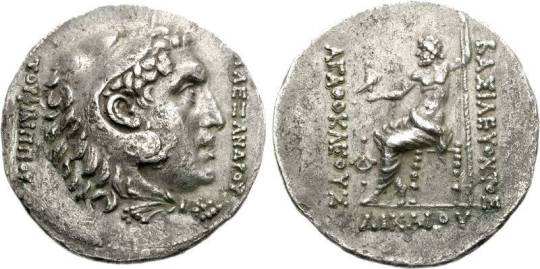
This shows Herakles wearing a lion skin on his head, with the words “ALEXANDER SON OF PHILIP;” on the back of the coin, Zeus holds an eagle, accompanied by the words “KING AGATHOKLES THE JUST.”
Pretty Greek, right?
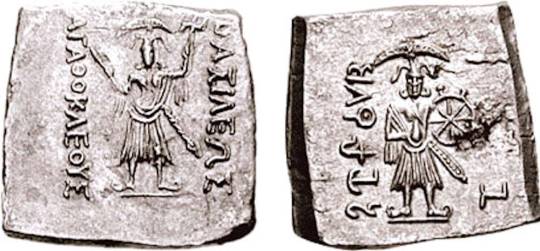
It’s square, a shape much more common in Indian coins. And you’ll notice that it has two different scripts, one on the front and one on the back. On the one side, we see the Hindu deity Balarama-Samkarshana with the words (in Greek) “KING AGATHOKLES,” while on the back we have a Hindu god, Vāsudeva-Krishna, with Agathokles’ name written in the Brahmi script, which was widely used in South Asia.
{WHF} {Ko-Fi} {Medium}
128 notes
·
View notes